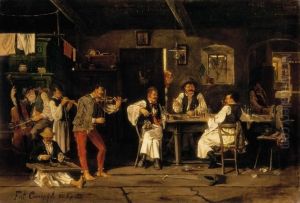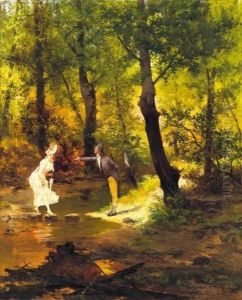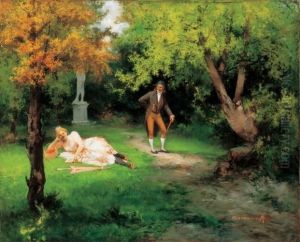Arpad Cserepy Paintings
Arpad Cserepy was a Hungarian painter and graphic artist, born on May 13, 1882, in Budapest, Hungary. Coming from a country with a rich artistic tradition, Cserepy carved out a distinct niche for himself in the realms of European art. He was primarily known for his landscapes, portraits, and still life works, which showcased a unique blend of naturalism and expressionism. Cserepy's early artistic journey was influenced by the vibrant cultural scene of Budapest and the broader Austro-Hungarian Empire, where he was exposed to a variety of artistic styles and movements.
Educated at the Hungarian University of Fine Arts, Cserepy was a student under some of the most prominent Hungarian artists of the time. His education provided him with a solid foundation in classical art techniques, but it was his personal exploration and experimentation that led him to develop his distinctive artistic voice. After completing his studies, Cserepy traveled extensively throughout Europe, drawing inspiration from the natural landscapes and artistic heritage of countries such as Italy, France, and Germany.
Throughout his career, Cserepy exhibited his work in numerous solo and group exhibitions, both in Hungary and internationally. His paintings were well-received, earning him a reputation as a masterful landscape and portrait painter. Cserepy's art was characterized by its vivid color palette, dynamic compositions, and the ability to capture the essence of his subjects with both realism and emotional depth.
Despite the challenges posed by the two World Wars and the changing political landscape of Europe in the 20th century, Cserepy continued to produce art that resonated with both critics and the public. He remained active in the Hungarian art scene, contributing to the development of modern Hungarian art through his teaching and mentorship of younger artists.
Arpad Cserepy passed away on August 24, 1961, in Budapest, leaving behind a legacy as one of Hungary's most distinguished and influential artists of the early 20th century. His work continues to be celebrated for its contribution to Hungarian and European art, with his paintings held in numerous private collections and museums around the world.













